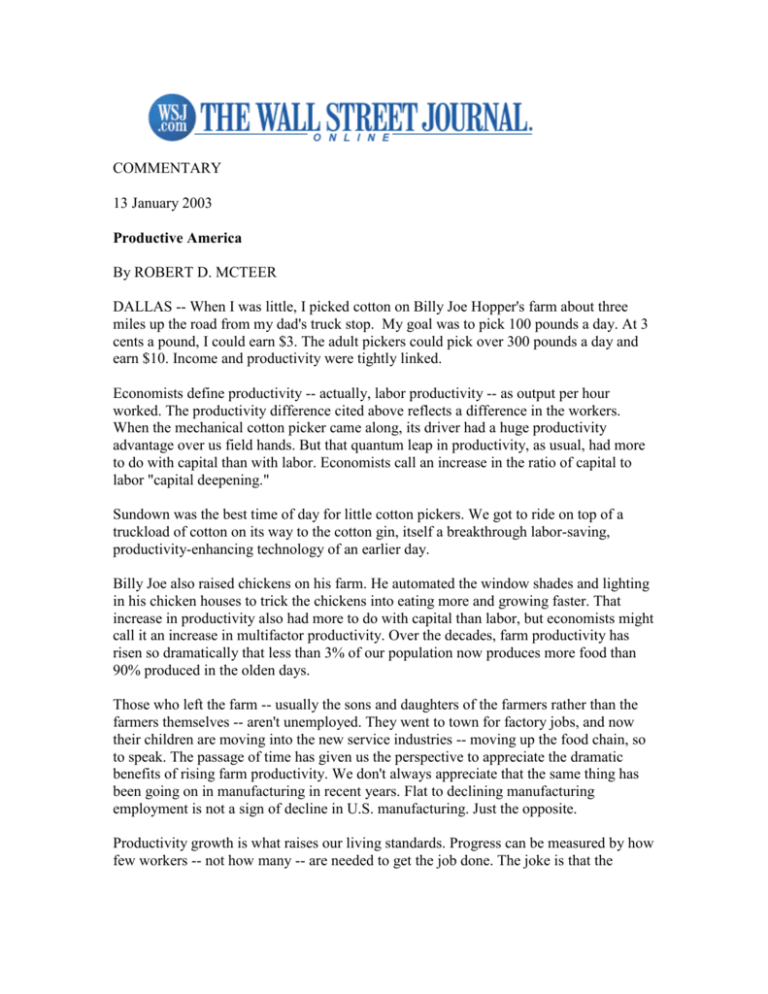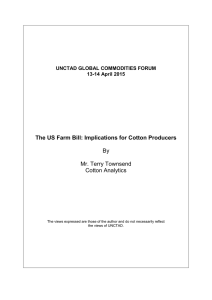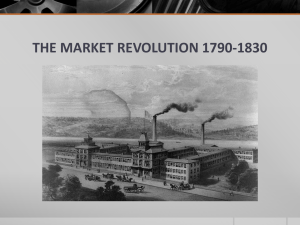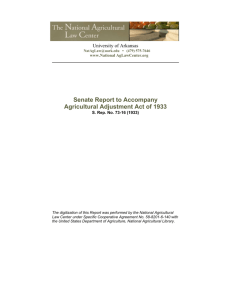
COMMENTARY
13 January 2003
Productive America
By ROBERT D. MCTEER
DALLAS -- When I was little, I picked cotton on Billy Joe Hopper's farm about three
miles up the road from my dad's truck stop. My goal was to pick 100 pounds a day. At 3
cents a pound, I could earn $3. The adult pickers could pick over 300 pounds a day and
earn $10. Income and productivity were tightly linked.
Economists define productivity -- actually, labor productivity -- as output per hour
worked. The productivity difference cited above reflects a difference in the workers.
When the mechanical cotton picker came along, its driver had a huge productivity
advantage over us field hands. But that quantum leap in productivity, as usual, had more
to do with capital than with labor. Economists call an increase in the ratio of capital to
labor "capital deepening."
Sundown was the best time of day for little cotton pickers. We got to ride on top of a
truckload of cotton on its way to the cotton gin, itself a breakthrough labor-saving,
productivity-enhancing technology of an earlier day.
Billy Joe also raised chickens on his farm. He automated the window shades and lighting
in his chicken houses to trick the chickens into eating more and growing faster. That
increase in productivity also had more to do with capital than labor, but economists might
call it an increase in multifactor productivity. Over the decades, farm productivity has
risen so dramatically that less than 3% of our population now produces more food than
90% produced in the olden days.
Those who left the farm -- usually the sons and daughters of the farmers rather than the
farmers themselves -- aren't unemployed. They went to town for factory jobs, and now
their children are moving into the new service industries -- moving up the food chain, so
to speak. The passage of time has given us the perspective to appreciate the dramatic
benefits of rising farm productivity. We don't always appreciate that the same thing has
been going on in manufacturing in recent years. Flat to declining manufacturing
employment is not a sign of decline in U.S. manufacturing. Just the opposite.
Productivity growth is what raises our living standards. Progress can be measured by how
few workers -- not how many -- are needed to get the job done. The joke is that the
factory of the future will employ only one man and one dog. The man is needed to feed
the dog. The dog's job is to keep the man from touching the computer.
Faster productivity growth in the late 1990s was the driving force of the new economy.
After rising less than 1.5% from the early 1970s to the early '90s, productivity growth
doubled, from about 1.4% to 2.8% a year. To appreciate the significance of that, think
compound interest.
The growth and productivity numbers of the New Economy period were more impressive
before data revisions. Not only is the future not what it used to be, neither is the past. So,
productivity growth only doubled in the new economy. I'll take it. There ought to be a
law against data revisions, or a statute of limitations. There may have been more foam
and less beer in the New Economy numbers than we thought, but there was still much
more beer than before.
Faster productivity growth produced benefits. The economy's potential noninflationary
growth rate of 2% to 2.5% increased to almost 4%. Estimates of the noninflationary
unemployment rate of up to 6% declined to below 5%. (I would say closer to 4%.)
Monetary policy could be easier without being inflationary. Faster growth turned budget
deficits into surpluses. In summary, the economy got its mojo back. All this, of course, is
old news. The new news is that productivity continued to grow during the economic
slowdown. Productivity growth over the four quarters ending in third quarter 2002
averaged 5.6%. Productivity has grown faster lately than output -- we're producing more
with less labor.
No one expects productivity growth to continue at recent rates. Certainly not in the very
slow fourth quarter 2002 and possibly not in the current quarter if growth fails to pick up.
But the recent performance of productivity does augur well for long-term growth once we
get beyond the current soft spot. The economic imperative that drove productivity growth
in the '90s -- increased competition due to a deregulated, free-trade, global economy -has not disappeared.
Mr. McTeer is president of the Federal Reserve Bank of Dallas.
URL for this article:
http://online.wsj.com/article/0,,SB1042413501936272544,00.html
Updated January 13, 2003
Copyright 2003 Dow Jones & Company, Inc. All Rights Reserved
Printing, distribution, and use of this material is governed by your Subscription
agreement and Copyright laws.
For information about subscribing go to http://www.wsj.com












